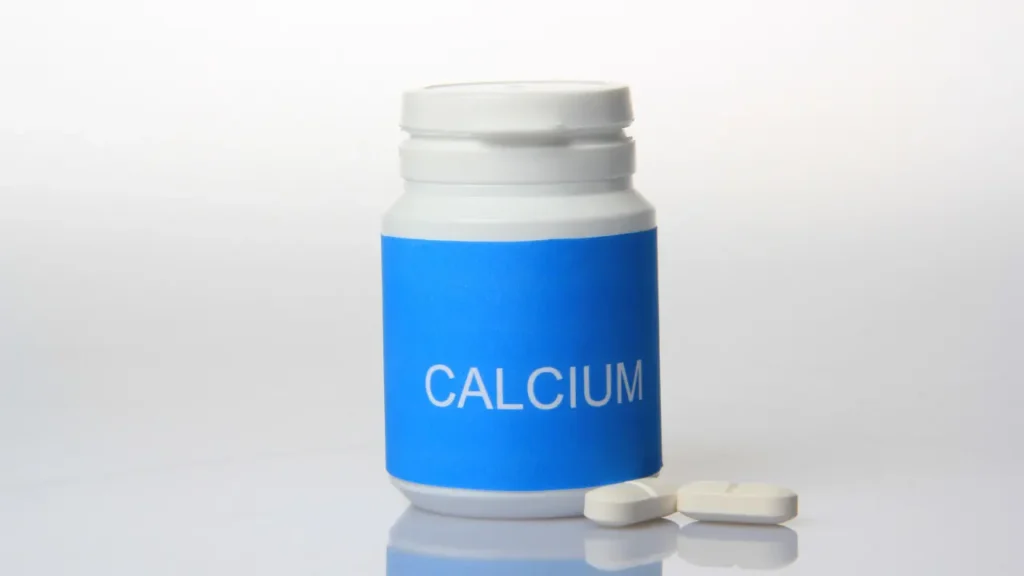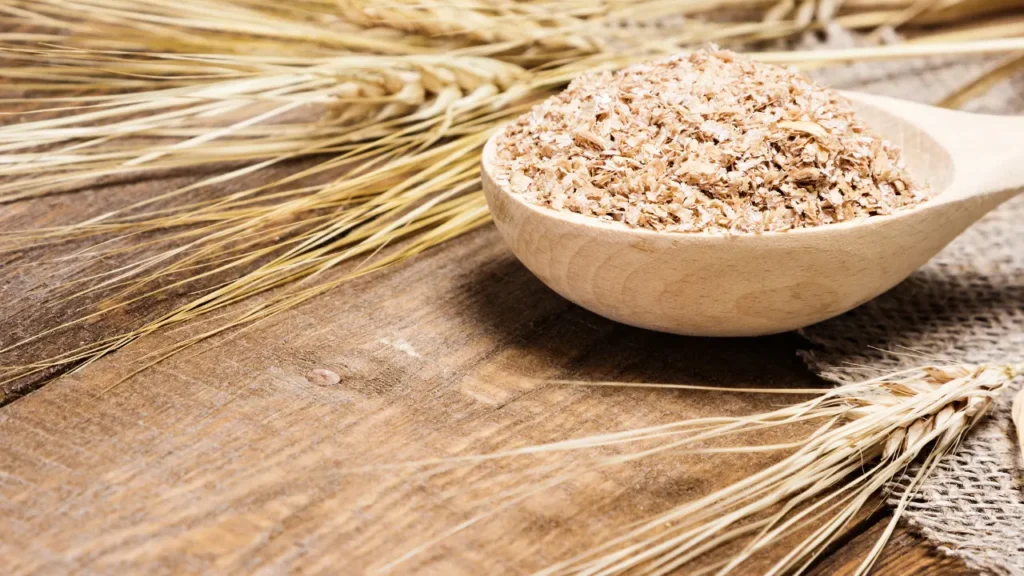The outer layer of the wheat kernel is where wheat bran, a naturally occurring byproduct of wheat milling, is derived. As a highly nutritious nutritional supplement that provides numerous health advantages, it has grown in popularity in recent years. The goal of this article is to give a thorough background of the chemistry, physiological properties, health advantages, ideal dosage, potential side effects, and interactions between different constituents of wheat bran.
You May Also Like:
Diamond CBD Gummies vs. Joy Organics CBD Gummies
Sunmed CBD vs. Partnered Process CBD: Finding the Best CBD for Sleep
Wheat Bran: Benefits, Dosage, Side Effects, Drug Interactions, And Other Important Information is an original (NootropicsPlanet) article.
Nature of Wheat Bran
Wheat bran is made from the pericarp, which is the outer layer of the wheat kernel. It is a byproduct of the wheat milling process, formed during the separation of the starchy endosperm from the kernel’s outer layers. Wheat bran is a dark, gritty, and fibrous fiber with a somewhat nutty flavor that can be used in a variety of dishes such as cereals, bread, muffins, and smoothies.
Health Benefits of Wheat Bran
Health of the Gastrointestinal Tract
Wheat bran’s high dietary fiber content is essential for gastrointestinal health. Insoluble fibers promote bowel movement and increase stool size, lowering the risk of constipation and other gastrointestinal illnesses such as diverticular disease (Dahl et al., 2005). Soluble fibers, on the other hand, are fermented by colonic bacteria, resulting in the production of short-chain fatty acids (SCFAs) such as acetate, propionate, and butyrate, which serve as energy sources for colonocytes and contribute to gut barrier integrity (Holscher, 2017).
Cardiovascular Wellness
The bio-active components and dietary fiber in wheat bran contribute to its cardio-protective properties. Phenolic acids and flavonoids have antioxidant and anti-inflammatory properties that protect against oxidative stress and inflammation, both of which contribute to the development of cardiovascular disease (Cicero et al., 2013). Furthermore, the soluble fiber in wheat bran can help lower LDL cholesterol levels by decreasing absorption and increasing bile acid excretion (Brown et al., 1999).
Weight Control and Glycemic Control
Consuming wheat bran has been associated with better glycemic control in people with type 2 diabetes. Soluble fibers can lower postprandial glucose response by slowing stomach emptying and glucose absorption (Jenkins et al., 2002). Furthermore, the high fiber content of wheat bran induces satiety, which can aid in weight management by lowering overall calorie consumption (Howarth et al., 2001).
Cancer Avoidance
Wheat bran’s fiber content and bio-active chemicals have been linked to its potential significance in cancer prevention, particularly colorectal cancer. Carcinogenic chemicals can be diluted and bound by dietary fiber, limiting their interaction with the intestinal mucosa (Bingham et al., 2003). SCFAs derived from fiber fermentation have also been found to suppress cancer cell proliferation and increase apoptosis (Hague et al., 1997). Furthermore, the phenolic chemicals in wheat bran have antioxidant and anti-inflammatory effects, which can protect against carcinogenesis (Adom et al., 2005).

The Chemistry of Wheat Bran
Wheat bran is an intricate blend of carbs, proteins, lipids, and bio-active substances. It is high in dietary fiber (65-75%), which includes both insoluble fiber (mostly cellulose and hemicellulose) and soluble fiber (such as arabinoxylans) (Martin et al., 2020). Wheat bran also has a high concentration of proteins (15-20%), mostly in the form of gluten, and lipids (2.5-4.5%), which include important fatty acids like linoleic and linolenic acids (Zhang et al., 2018).
In addition to these macronutrients, wheat bran provides an excellent source of micronutrients such as vitamins (especially B vitamins) and minerals (primarily magnesium, phosphorus, and potassium) (Sivam et al., 2010). Furthermore, wheat bran includes phenolic acids, flavonoids, and phytic acid, which have antioxidant, anti-inflammatory, and other health-promoting effects (Adom et al., 2005).
Physiological Properties of Wheat Bran
The many physiological properties of wheat bran, which are principally linked to its high fiber content and bio-active substances, work synergistically to promote health:
Gastrointestinal Health
Wheat bran’s insoluble fiber increases volume to the stool, which makes it easier to pass through the gastrointestinal tract, supporting regular bowel movements and lowering the risk of constipation. Soluble fiber, on the other hand, is fermented by the gut microbiota, resulting in the generation of SCFAs, which enhance colonocyte function and gut barrier probity.
Cardiovascular Health
Wheat bran contains phenolic acids and flavonoids, which have powerful antioxidant and anti-inflammatory properties, helping to neutralize oxidative stress and combat inflammation, both of which are linked to the development of cardiovascular disease. Soluble fiber also helps with cholesterol management by sequestering bile acids, encouraging their evacuation and lowering LDL cholesterol levels.
Glycemic Control and Weight Management
The high fiber content of wheat bran aids in blood glucose regulation by slowing stomach emptying and lowering glucose absorption rates, resulting in a more delayed postprandial glucose response. Furthermore, the increased satiety offered by the high fiber content can help with weight management by reducing total caloric consumption.
Cancer Prevention
Wheat bran’s fiber content protects against carcinogenesis by diluting potentially carcinogenic chemicals and reducing their interaction with intestinal cells. SCFAs, which are created by fiber fermentation, have been demonstrated to inhibit cancer cell proliferation and induce apoptosis. Furthermore, the antioxidant and anti-inflammatory properties of wheat bran’s phenolic content provide further cancer-prevention benefits.


Optimal Dosage of Wheat Bran
The recommended dose of wheat bran is determined by your age, gender, and overall health. However, typical dietary fiber intake recommendations can be used as a guideline. Adults should ingest 14 grams of fiber per 1,000 calories daily, according to the American Dietetic Association (Trumbo et al., 2002). This amounts to about 25 grams of fiber for women and 38 grams for men each day.
Given that wheat bran is a concentrated source of dietary fiber, integrating 2-4 tablespoons (about 12-24 grams) of wheat bran into your daily diet can help achieve these fiber requirements significantly. However, it is critical to gradually increase wheat bran consumption to avoid any gastrointestinal side effects and to drink enough fluids to aid digestion.
Side Effects of Wheat Bran
It is important to start small, and then gradually increase wheat bran consumption in order to minimize any gastrointestinal side effects and to drink plenty of fluids to facilitate digestion since you would be taking 12-24 grams of wheat bran daily.
Potential Substance Interactions with Wheat Bran
Due to its high fiber content and bio-active components, wheat bran can interact with certain drugs, minerals, and other substances.
Interactions Between Medications
Wheat bran’s high fiber content may interfere with the absorption and effectiveness of certain medications, including oral contraceptives, cholesterol-lowering treatments (statins), and some antibiotics (e.g., tetracycline). To avoid potential interactions, consume wheat bran at least 2 hours before or after taking these medications (Dikeman et al., 2006).
Interactions Between Nutrients
Wheat bran includes phytic acid, a naturally occurring molecule that has the ability to bind minerals like calcium, iron, and zinc, lowering their bio-availability (Schlemmer et al., 2009). To prevent these effects, it is critical to consume a well-balanced diet rich in these minerals or, if necessary, consider supplementation.


Best Responsible Use of Wheat Bran
You should follow the following suggestions to guarantee responsible use of wheat bran and maximize its health benefits:
Gradual Orientation
Allow the digestive system to acclimate to the increased fiber intake by gradually introducing wheat bran into the diet. This method reduces the likelihood of gastrointestinal discomfort, such as bloating, gas, and abdominal pain.
Hydration is Essential
Consume enough fluids when eating wheat bran to ensure good digestion and avoid constipation. Drinking water, herbal tea, or other non-alcoholic beverages can help you stay hydrated.
A Healthy Diet
Include wheat bran in a well-balanced diet that also contains fruits, vegetables, lean proteins, and healthy fats. This method ensures a complete intake of vital nutrients and helps to mitigate potential nutritional interactions caused by the phytic acid concentration of wheat bran.
Considerations for Allergy and Sensitivity
Wheat bran should be avoided by those who have celiac disease or gluten sensitivity since it contains gluten, which can stimulate an immunological reaction and create health problems. Alternative gluten-free sources of dietary fiber should be examined in such circumstances.
Interactions Between Medications
Wheat bran can interact with pharmaceuticals such as oral contraceptives, cholesterol-lowering treatments (statins), and some antibiotics. To avoid potential interactions, consume wheat bran at least 2 hours before or after taking these drugs.
Individuals can safely and responsibly add wheat bran into their diets to benefit from its numerous health-promoting benefits by following these suggestions.
Wheat Bran:
Conclusion
Wheat bran provides health advantages through a variety of physiological pathways, the majority of which are connected with its high fiber content and bio-active compounds. However, it is always important to speak with your doctor before starting a wheat bran supplement, due to its effects on the digestive system. Every person’s body reacts differently and it is important to be safe about supplementation of any kind.


References:
- Wheat bran’s dietary fiber and health benefits: A comprehensive review. Retrieved from: https://www.sciencedirect.com/science/article/pii/S0924224416302465
- Fiber, wheat bran, and colorectal cancer prevention: A comprehensive review. Retrieved from: https://academic.oup.com/ajcn/article/109/Supplement_1/547S/5479338
- Wheat bran consumption and its effects on glycemic control in individuals with type 2 diabetes: A systematic review. Retrieved from: https://journals.lww.com/nutritiontodayonline/Abstract/2018/09000/Wheat_Bran_Consumption_and_Its_Effects_on.6.aspx
Important Note: The information contained in this article is for general informational purposes only, and should not be construed as health or medical advice, nor is it intended to diagnose, prevent, treat, or cure any disease or health condition. Before embarking on any diet, fitness regimen, or program of nutritional supplementation, it is advisable to consult your healthcare professional in order to determine its safety and probable efficacy in terms of your individual state of health.
Regarding Nutritional Supplements Or Other Non-Prescription Health Products: If any nutritional supplements or other non-prescription health products are mentioned in the foregoing article, any claims or statements made about them have not been evaluated by the U.S. Food and Drug Administration, and such nutritional supplements or other health products are not intended to diagnose, treat, cure, or prevent any disease.
